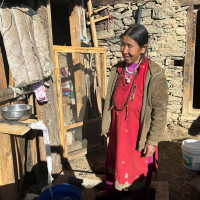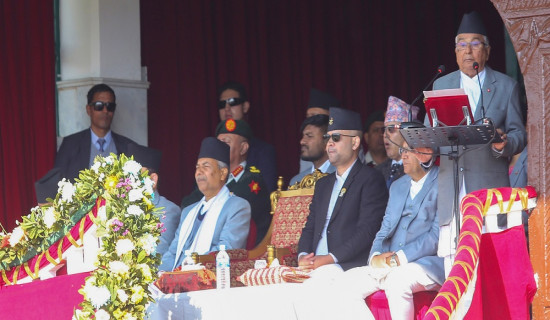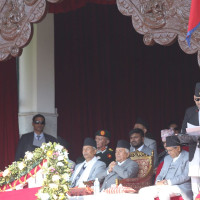- Monday, 15 December 2025
Bardiya tigers burning bright for tourists
Bardiya, July 25: Bardiya National Park is one of the most important destinations to experience wildlife in the midst of thick jungle. The largest national park in the Terai lowland covers an area of 968 square kilometers. It was established for protecting typical ecosystems and conserving the habitat of the Bengal tiger and its prey species.
The typical traditional houses and locally grown food are other attractions for both domestic and international tourists. Well-mannered and cooperative people with their positive outlook of life are other unforgettable moments while visiting the national park area.
BNP is recording an increase in tourist numbers after the COVID-19 restrictions were eased and has, of late, emerged as one of the best choices for domestic tourists.
According to Bishnu Prasad Shrestha, chief conservation officer at BNP, altogether 16,207 tourists visited the park in the last fiscal year. Of them, 13,074 are domestic and 2,322 are international tourists. Around 3,000 tourists visited during the month of Chait (March/April), which is the best month for viewing the tiger, Shrestha said.
The national park collected revenue of Rs. 20 million in the last fiscal year.
Around 8,077 tourists including domestic and international visited the park in the fiscal year 2020/2021. Some 2,000 tourists visited in the month of Chait (March/April) alone. February, March and April are the best months for watching wild animals like tigers and one-horned rhinos at the nearby river banks, Shrestha said.
The park is home to endangered animals such as the Royal Bengal tiger, wild elephant, great one-horned rhinoceros, and a variety of bird species.
Ram Shahi, a senior nature guide and chairman of Bardiya Nature Conservation, said that tourism in Bardiya has become seasonable because visiting the national park is not suitable during the rainy season.
Walking is open for bird watching and exploring the forest but jeep safari is closed for three months from mid-July to mid-October during the rainy season as there will be no wildlife watching activities during these months.
"Tharu culture is the main attraction for the tourists but we have challenges to preserve it. Because the new infrastructures are being constructed disregarding the traditional styles," Shahi said.
According to Krishna Bhattarai, chairman of the Eco-Tourism Development Forum, the tourism environment in the area is well managed. Locally produced items are supplied and hotels are employing local people.
"The younger generation who want to stay here are providing training and employment in the local hotels so that they do not have to seek jobs somewhere else," he said.
Mohan Chaudhary, chairman of Hotel Association Nepal, Bardiya said that they are preserving the
traditional (Tharu) style houses and food because they are the main attraction of Bardiya. Conservation has become successful in Bardiya even though it is located far from the centre of the country, he added.
Tourism is growing but there are human-wildlife conflicts in the national park's buffer zone.
"Tigers are increasing, which is the main attraction of the national park but at the same time conflict is also increasing with it," Chaudhary said.
BNP is the home to 87 tigers according to the census. BNP was established in 1988 as Royal Bardiya National Park. It adjoins the eastern bank of the Karnali River and intersected by the Babai River in the Bardiya district.
















